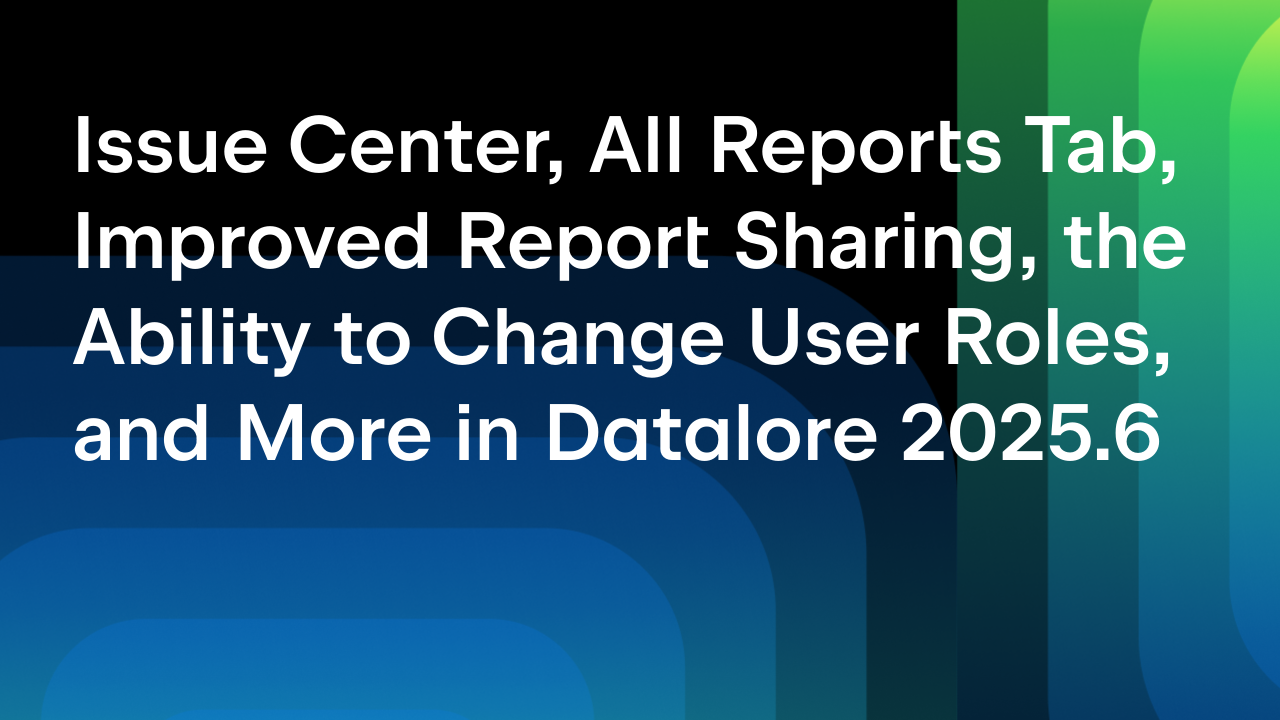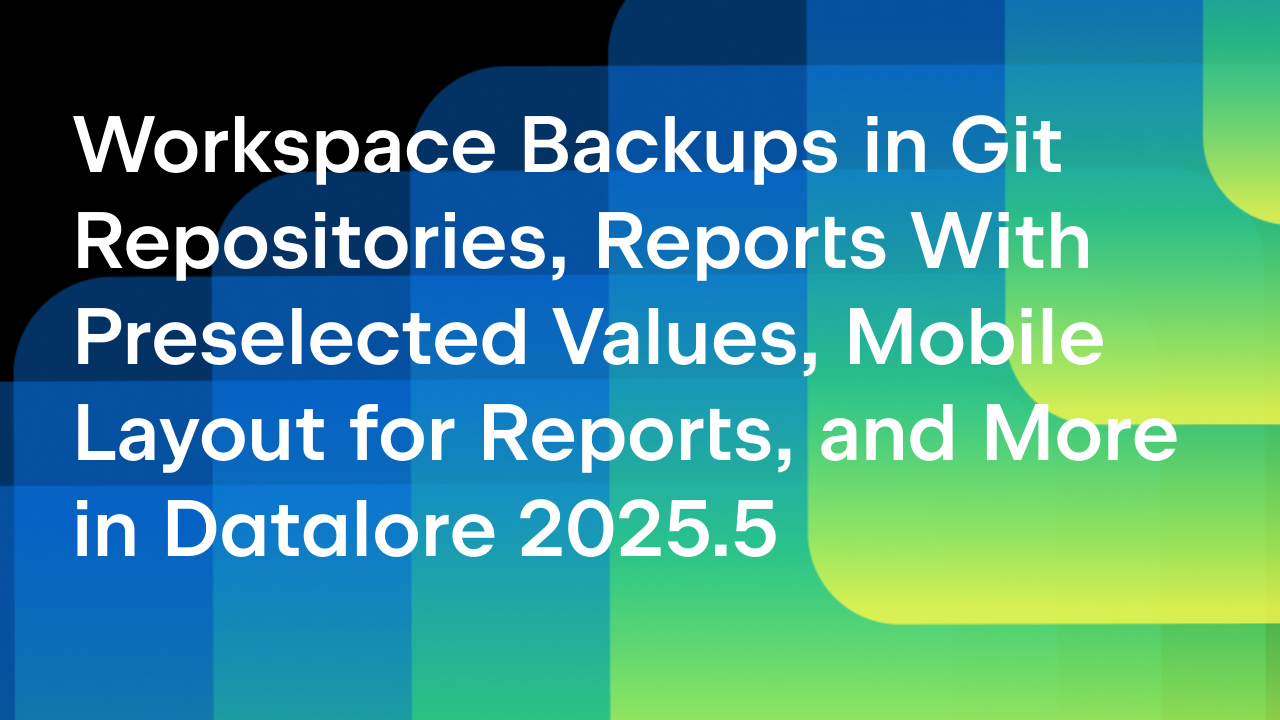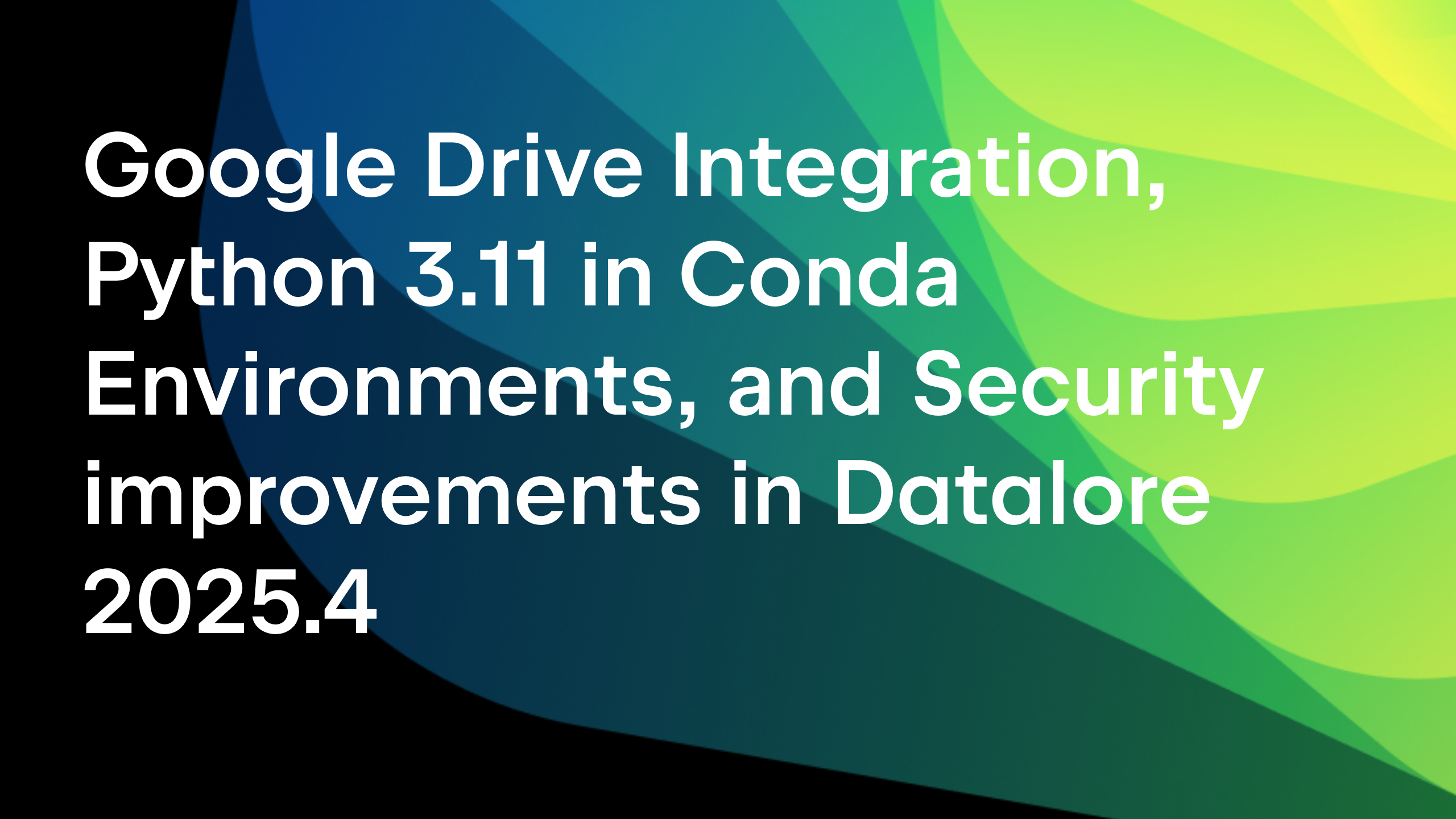Datalore
Collaborative data science platform for teams
Datalore Enterprise 2022.3: Report Builder, Interactive Tables, Upgraded Docker-Based Installation, and More
Greetings!
One of the challenges Datalore is undertaking with the 2022.3 release is removing the hurdles to understanding and sharing data science results company-wide. We are thrilled to introduce a major update to the Reporting workflows. Read on to learn what’s new in the 2022.3 release or watch the video overview below!
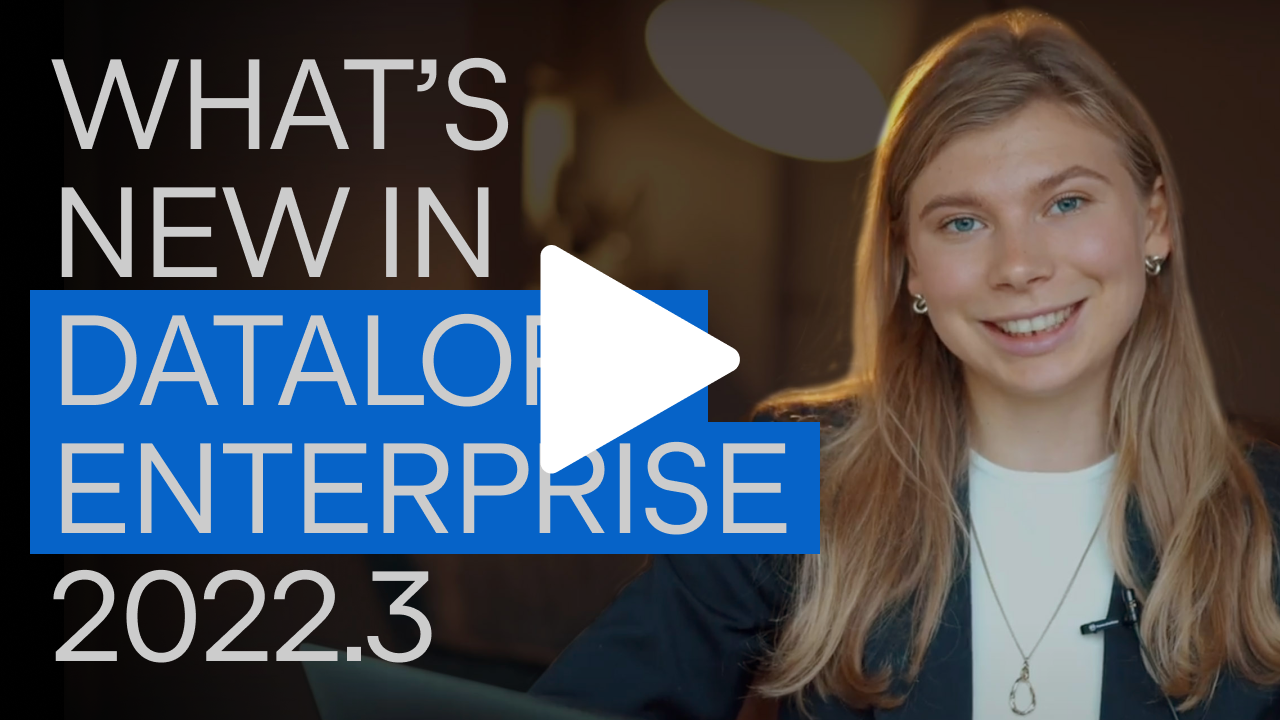
What’s new for reporting and sharing
TL;DR – Data scientists can now build beautiful dashboard-style reports with the Report builder, highlight specific numbers with Metric cells, work with date inputs via Date cells, filter and sort DataFrames from the UI, and share their work with groups of users.

Report builder
The Report builder revolutionizes building Interactive reports from notebooks in Datalore. Drag and drop the cells on the canvas, easily adjust their height and width, publish the result as a static or Interactive report with the click of a button, and share it with your stakeholders via a link.
What is special about the reports in Datalore is that there is a direct connection between the analysis, the data, the environment, and the final report. This means you can update reports in seconds and easily answer any questions about where the data comes from.
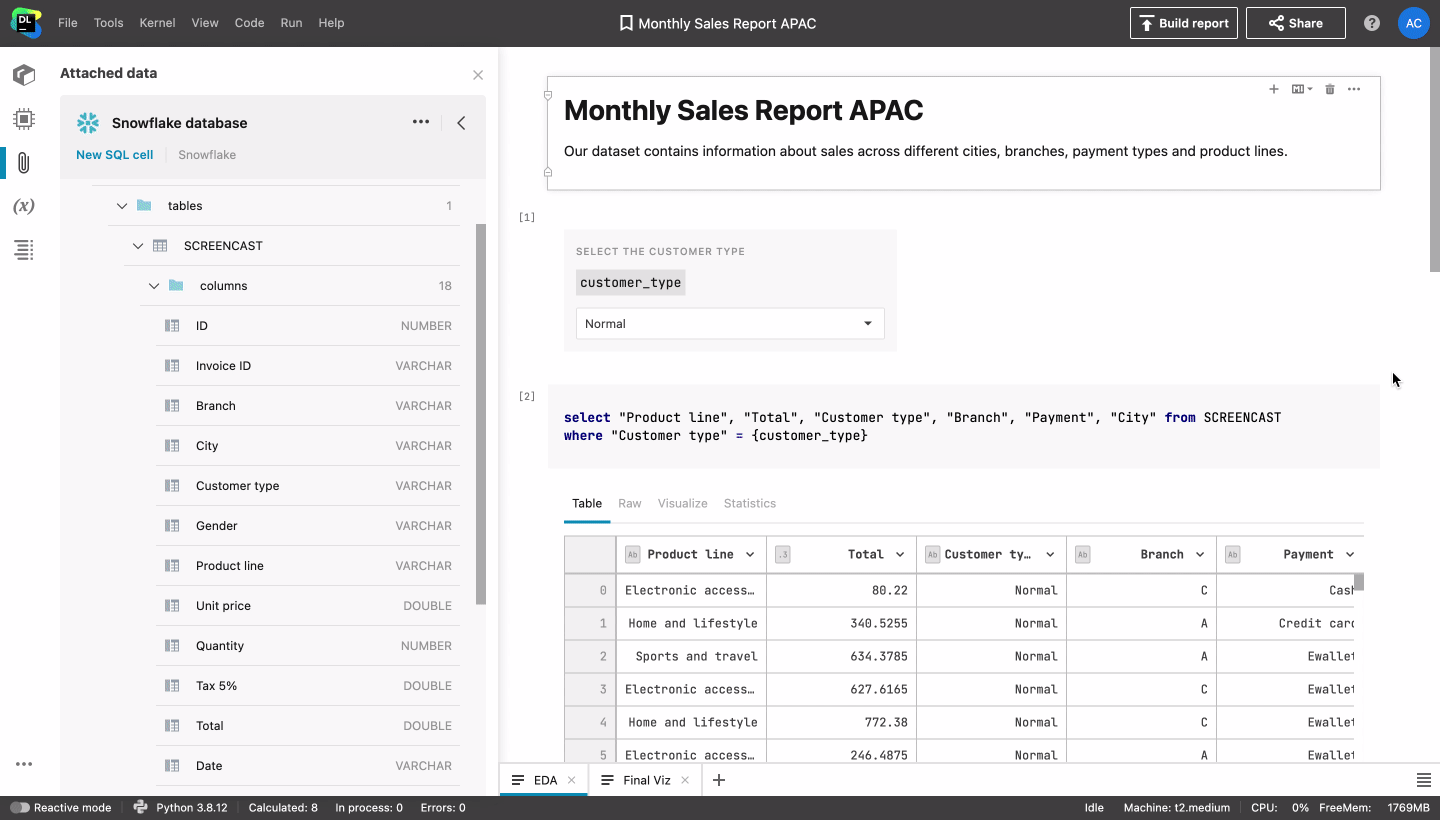
Interactive tables
We’ve added a pinch of Excel for working with dataframes in Datalore. Apply filtering and sorting to Pandas DataFrames and SQL query results directly in the cell output. Select the columns to display, sort the dataset by a specific column, filter using “equals” and “contains” expressions, and easily jump to the top or bottom of the dataset. Let Datalore generate the boilerplate Python code to reproduce the same table representation later on in the notebook.
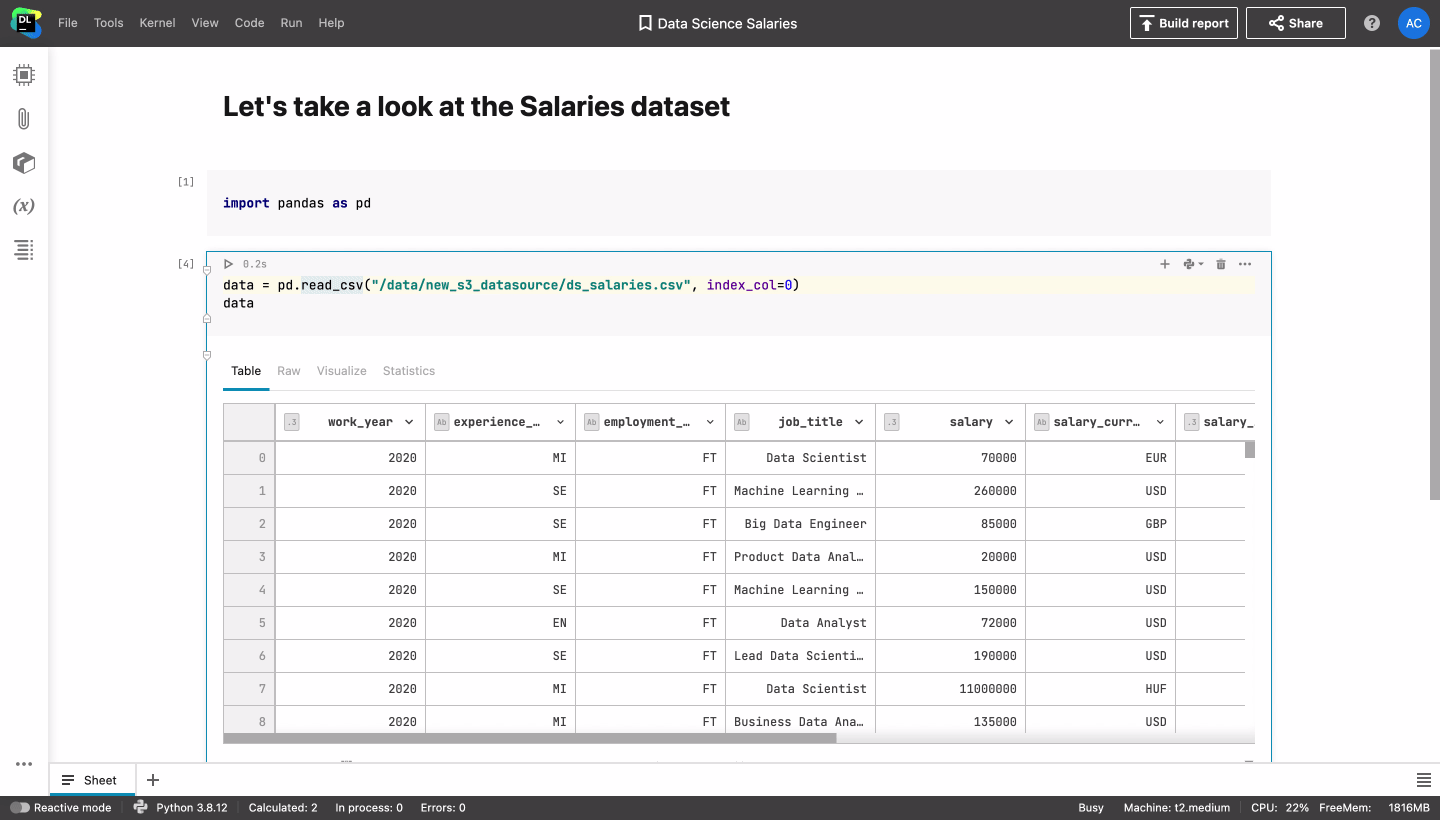
Metric and Date cells
Data-driven teams act according to how certain metrics develop over time. With the 2022.3 release, it is now easy for data scientists to emphasize the dynamics of various metrics in their work and show the results for a given time period specified by report users.

With a Metric cell, you can make your Python variable stand out from the rest of the notebook and choose to compare it either with another constant variable or with the results of the cell’s previous execution.
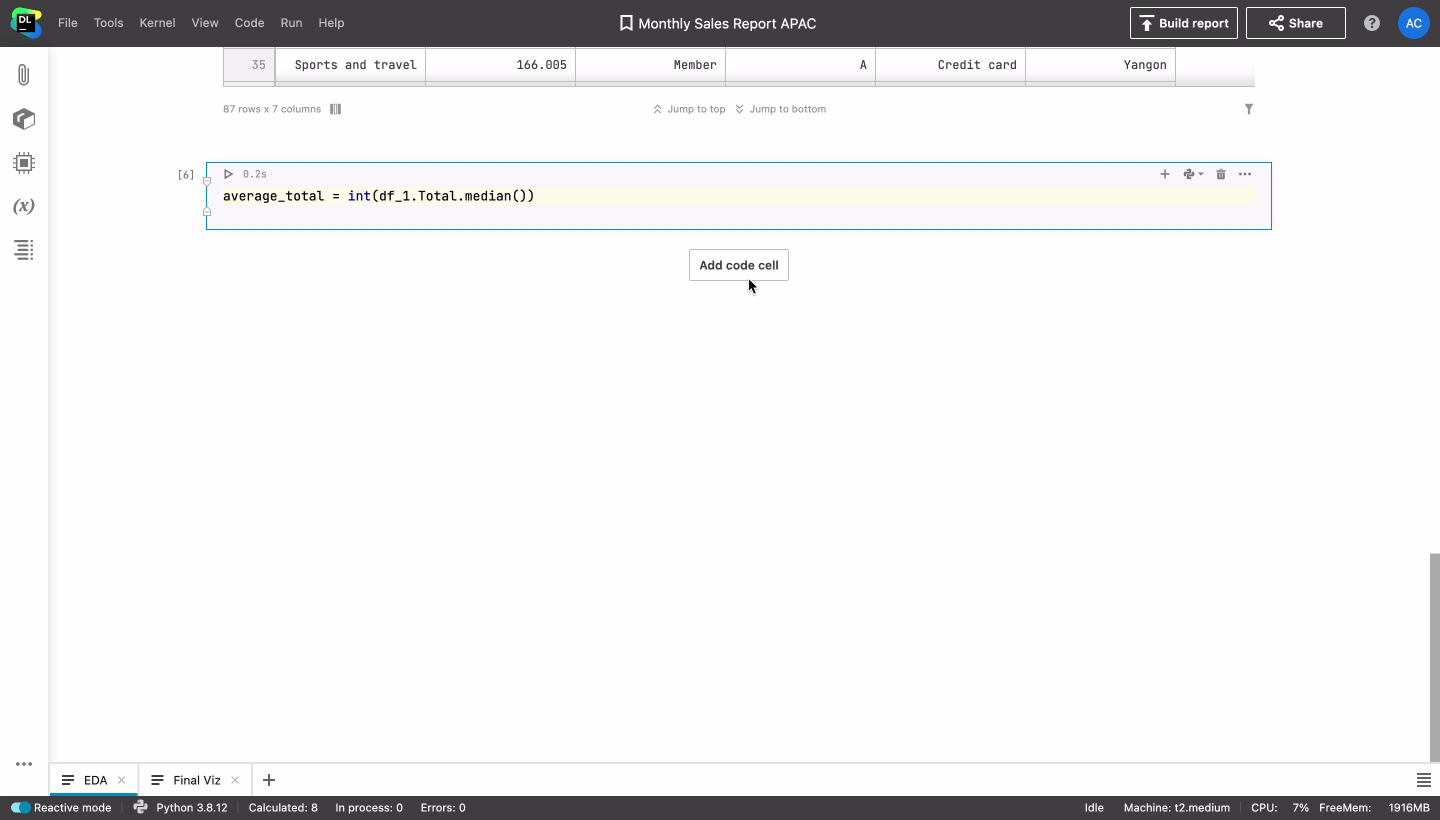
With a Date cell you can ask your report users to choose a specific date or a period and then use this selection as a variable in your code.

User groups support
You can now easily manage who can access notebooks and workspaces via group sharing. There are 2 ways to create groups of users:
- Manually make them from inside Datalore’s Admin panel
- Sync groups from your authentication provider (e.g. Azure AD) with the JetBrains Hub authentication module, and hence with Datalore. You can find more information on supported authentication modules here. Please email us at datalore-enterprise@jetbrains.com to learn whether syncing is available for your authentication provider.

Updated UI for reports
While we were massively upgrading the reporting workflows, we decided to refresh the look of the reports:
- Tables of contents are now collapsable.
- The Recalculate report button has been moved to the top right-hand corner.
- Static and Interactive reports now look the same.
- Publishing and printing options are now nested under the Menu tab.
- The Comment and Embed features are now available on cell hover.

Other fixes:
- We’ve deprecated cell visibility controls, as you can now choose what cells to include in reports with the Report builder.
- We’ve fixed the bug causing Secrets not to be attached to Interactive reports, and rerunning such reports will now work smoothly.
What’s new for data connections
TL;DR – You can connect to Google BigQuery, enjoy a better UX when working with S3 buckets, and turn on SSH tunneling to access databases in private networks.
Google BigQuery support
In the 2022.3 release, we’ve added Google BigQuery to the list of supported database integrations. You can now create a Google BigQuery connection through Datalore’s interface, choose the schemas you want to work with, browse the schemas’ tree and query data inside native SQL cells. For SQL you can enjoy code completion and syntax highlighting, and for query results you get automatic plots, interactive sorting and filtering, statistical summaries, and a seamless transition to Python.
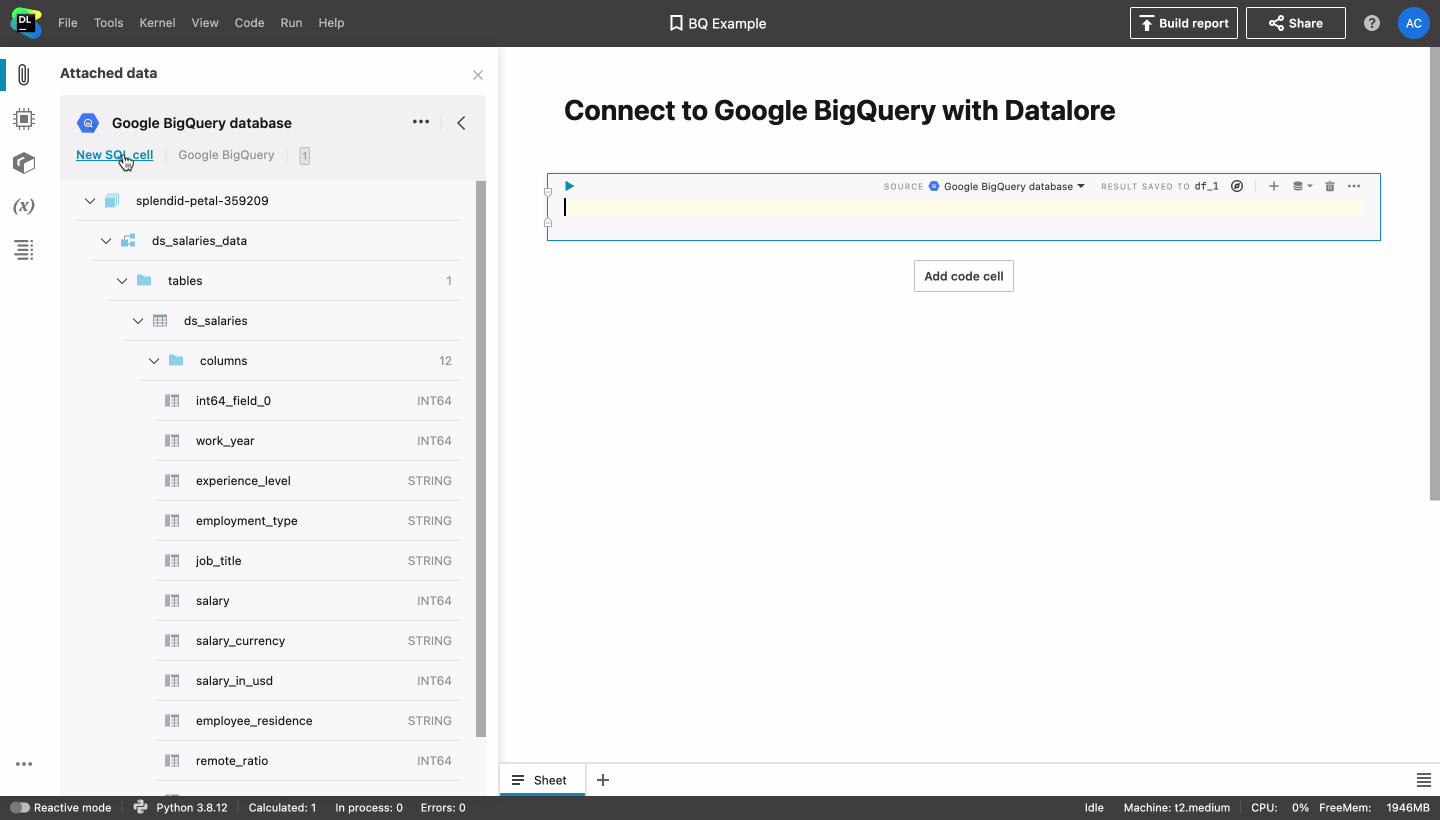
Improved UX for S3 buckets
You can now attach AWS S3 and GCS buckets from the same interface as the SQL databases and browse the buckets’ file systems! You can see a file preview in the right-hand sidebar and copy the file path with one click.

SSH tunneling
Connect to your remote databases using SSH tunneling in Datalore. This will create an encrypted SSH connection between Datalore and your gateway server. Using SSH tunnels makes it possible to connect to databases that are not exposed to the public network.

What’s new in Installation & Configuration
TL;DR – You can now run Datalore on a cluster of machines using Docker Swarm and connect to machines outside of your cluster thanks to seamless TeamCity integration.
Multiple machine connections in Docker-based installations
When we first released Docker-based installations in June 2022, it was only possible to run Datalore on one machine, and if you wanted to run Datalore on a cluster, then a Kubernetes-based installation was the way to go.
Datalore Enterprise 2022.3 makes it possible to connect multiple machines to a Docker-based installation using Docker Swarm. Docker Swarm machine connections can be used as an alternative to Datalore’s Kubernetes-based installation if you don’t have an existing k8s cluster. You can find more details in our documentation.
External machine connections with TeamCity
If you have any machines outside of your cluster, you can now connect them to your Datalore computational power using a seamless TeamCity integration. You can find more details about this integration in our documentation.
Advanced audit logging
We’ve massively extended the logging capabilities of Datalore and enabled the logging of actions related to the Admin panel, the Terminal, the Attached data tab, workspaces, the Computation tab, and more.
How to try Datalore Enterprise 2022.3
You can get started with a free Datalore Enterprise plan for 4 users or request a 1-month trial for up to 1000 users.
To upgrade from your current version of Datalore, follow the instructions in our documentation.
Additionally, if you want to showcase Datalore to your team, you can request a demo or try out the Cloud version of Datalore, hosted by JetBrains.
What’s next?
The next Datalore Enterprise release will be dedicated to quality improvements, such as adding new authentication methods, improving performance, and working on infrastructure enhancements.
To stay up to date about new features in Datalore, subscribe to our blog and follow us on Twitter!
Kind regards,
The Datalore team
Subscribe to Datalore News and Updates

